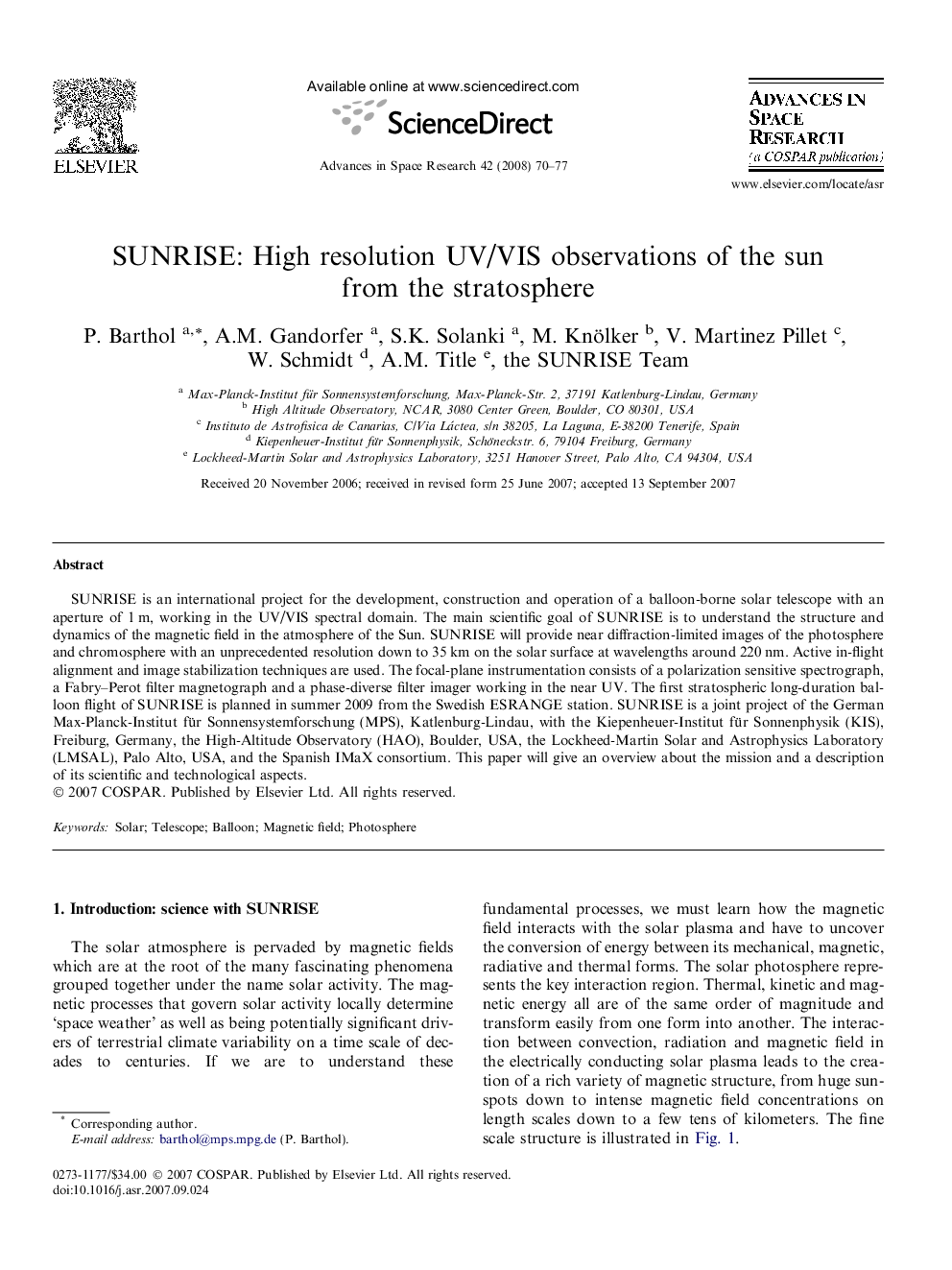| Article ID | Journal | Published Year | Pages | File Type |
|---|---|---|---|---|
| 1768023 | Advances in Space Research | 2008 | 8 Pages |
Abstract
SUNRISE is an international project for the development, construction and operation of a balloon-borne solar telescope with an aperture of 1Â m, working in the UV/VIS spectral domain. The main scientific goal of SUNRISE is to understand the structure and dynamics of the magnetic field in the atmosphere of the Sun. SUNRISE will provide near diffraction-limited images of the photosphere and chromosphere with an unprecedented resolution down to 35Â km on the solar surface at wavelengths around 220Â nm. Active in-flight alignment and image stabilization techniques are used. The focal-plane instrumentation consists of a polarization sensitive spectrograph, a Fabry-Perot filter magnetograph and a phase-diverse filter imager working in the near UV. The first stratospheric long-duration balloon flight of SUNRISE is planned in summer 2009 from the Swedish ESRANGE station. SUNRISE is a joint project of the German Max-Planck-Institut für Sonnensystemforschung (MPS), Katlenburg-Lindau, with the Kiepenheuer-Institut für Sonnenphysik (KIS), Freiburg, Germany, the High-Altitude Observatory (HAO), Boulder, USA, the Lockheed-Martin Solar and Astrophysics Laboratory (LMSAL), Palo Alto, USA, and the Spanish IMaX consortium. This paper will give an overview about the mission and a description of its scientific and technological aspects.
Related Topics
Physical Sciences and Engineering
Earth and Planetary Sciences
Space and Planetary Science
Authors
P. Barthol, A.M. Gandorfer, S.K. Solanki, M. Knölker, V. Martinez Pillet, W. Schmidt, A.M. Title, the SUNRISE Team the SUNRISE Team,
